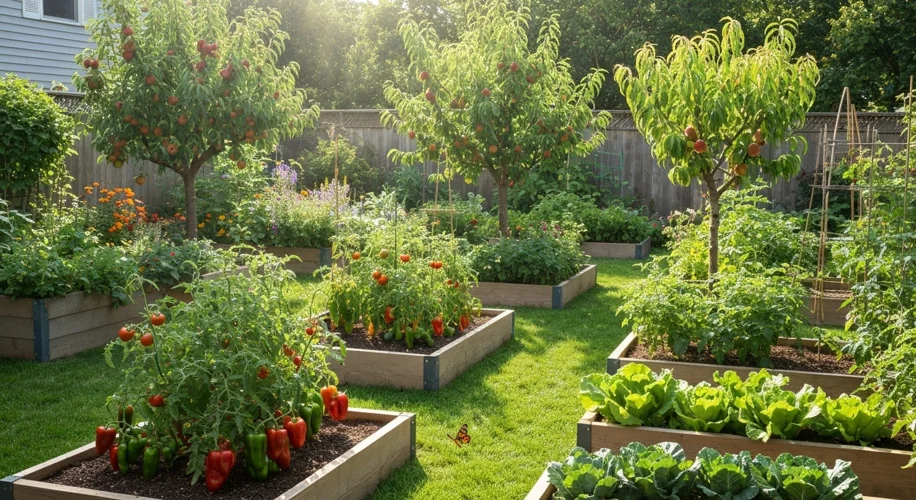Remember my backyard? It used to be just… grass. A neat, predictable rectangle of green that required more mowing than enjoyment. Like many of you, I dreamt of something more, something that fed not just the eyes, but the stomach and soul too. Today, I want to share my journey of transforming that typical suburban lawn into a thriving edible oasis, complete with a vegetable patch and a small orchard. It wasn’t magic, but it was definitely rewarding.
The Spark: A Desire for More
It started with a simple desire: to taste food that I grew myself. The thought of fresh, sun-ripened tomatoes or crisp lettuce harvested just moments before dinner was incredibly appealing. So, I decided to dive in. My suburban Midwest location has its own unique climate, so choosing the right plants was crucial.
Getting Down to Earth: Soil Preparation
The first step, and arguably the most important, was the soil. My existing lawn had compacted soil, not ideal for growing vegetables. I decided to start with a raised bed system. This allowed me to control the soil composition from the start. I mixed a generous amount of compost with good quality topsoil and a bit of aged manure. This rich, crumbly blend was the perfect foundation.
Planting the Seeds of Success
For vegetables, I focused on what grows well in our region and what my family loves to eat: tomatoes, peppers, zucchini, beans, and leafy greens like spinach and kale. For the orchard, I planted a dwarf apple tree and a peach tree. These varieties are known to do well in Zone 5b, which is my general area. Starting small made the process less daunting.
Nature’s Allies: Companion Planting and Pest Control
I quickly learned that gardening isn’t just about planting; it’s about creating a balanced ecosystem. Companion planting was a game-changer. For instance, planting basil near my tomatoes is said to improve their flavor and deter pests. Marigolds, scattered throughout the beds, are fantastic for deterring nematodes and other soil-dwelling insects. For pest control, I leaned heavily on natural methods. A strong spray of water often dislodges aphids, and introducing ladybugs or praying mantises helps keep populations in check. I also used organic neem oil sparingly when needed.
The Harvest: Sweet Rewards and Learning Curves
The moment of truth, of course, is the harvest. There’s an unparalleled satisfaction in eating something you’ve nurtured from a tiny seed. But it’s not always a smooth ride. I’ve had my share of challenges – surprise infestations, plants that just didn’t thrive, and the occasional critter deciding my hard work was a buffet. This year, my zucchini plants were a bit too enthusiastic, yielding more squash than I knew what to do with!
Embracing the Journey
Transforming my backyard has been more than just about growing food; it’s been about reconnecting with nature, understanding the seasons, and finding a deeper sense of accomplishment. It’s a continuous learning process, filled with both joys and lessons. If you’ve ever considered turning a patch of your lawn into something more, I encourage you to start small. Get your hands dirty, experiment, and enjoy the delicious rewards!

